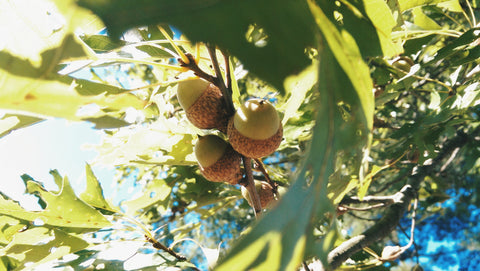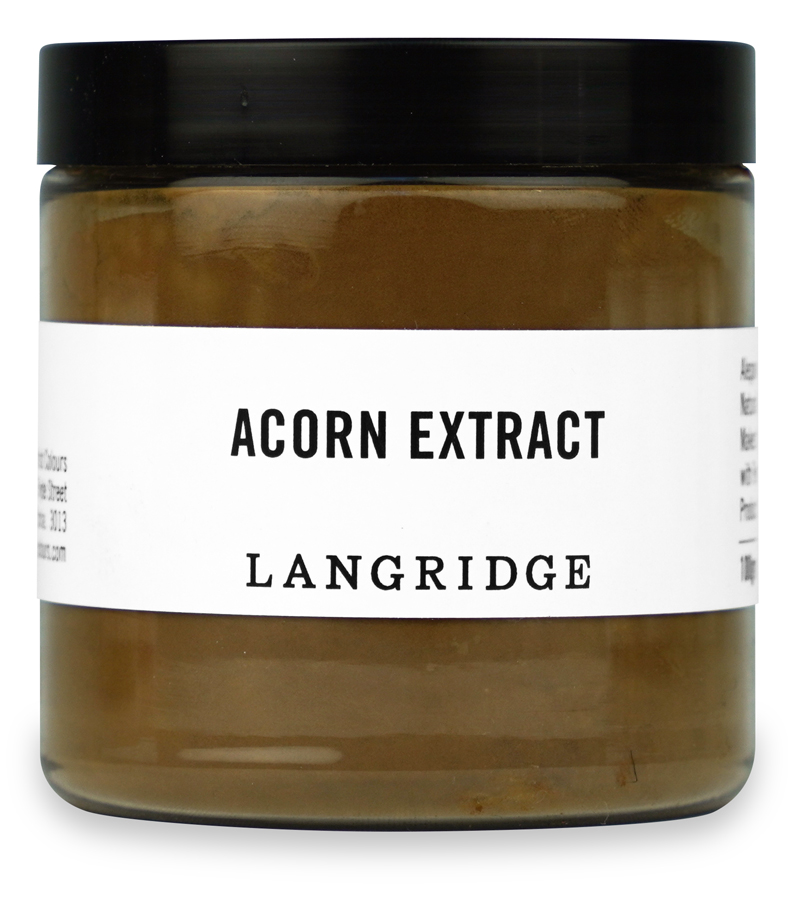

The studies by Steele and Smallwood, associate professor of biology at the University of Richmond, could have a significant impact on oak forest regeneration. The two researchers are studying why squirrels cache only certain acorns of the 32 species of oaks across eastern North America. "Gray squirrels may devour many acorns, but by storing and failing to recover up to 74 percent of them, these rodents aid regeneration and dispersal of oaks." The hot process is not as ideal as the colder process because much of the oil is lost in the heat, and it requires more energy."Are squirrels dispersers and planters of oak forests or pesky seed predators? The answer is not a simple one," says Steele, associate professor of biology at Wilkes University in Wilkes- Barre, PA.
#Acorn tannin for tanning hides skin#
Tannic water is soothing on skin irritations, freeze some into ice cubes and rub on poison ivy. You will also have a large concentrated amount of tannic water, which is valuable. This is a good method because it is fast, resulting in whole acorns good for snacking. Glaze in sugar or toss with salt and spices for snacking Use a dehydrator or an oven on the lowest setting with the door open and a fan next to it.


If they cool, the tannin will bind with the starch of the acorns permanently, resulting in a forever bitter product.ĭehydrate the kernels at 150 for an hour or two. It is important to keep the acorns hot, the water should be boiling at all times. Repeat until the water comes completely clear. Strain the acorns into a large pot and transfer them to the other pot of boiling water.įill the first pot with hot water from your kettle. Kettle filled with water, kept just below whistle īoil your acorns in a pot until the water turns the color of tea.To remove the tannin from your acorns another way, set your stove up as follows: While they will sort themselves out later, but the more discernment you apply at this stage the better. When collecting acorns, try to avoid any that seem light, look like they have been sitting on the ground for a long while, or have any small holes in the sides. They just need more leaching (more on that next). Knowing this, do not turn your foraging nose up at a bounty of stubby red oak acorns. So low is the tannin content in white oak acorns, some can actually be eaten right off the ground. What we really want is a huge mast of fresh acorns from a mighty white oak, as acorns from white oaks are low in tannin. Again, generally speaking, the smaller the cap on the acorn, the less the tannin content. That's because acorns are loaded with tannin, a bitter and acidic compound.
#Acorn tannin for tanning hides cracked#
If you have ever cracked open an acorn and tried to eat it, chances are your face scrunched into a tear jerking grimace and you spat the little nut out.

The mast is the quantity of acorns, or fruit, produced by the entire tree. Every year or every other year, depending on species, (we are speaking very generally here, there are around 600 species of oak, 90 native to the US) an oak tree will produce a mast. White oaks generally have smooth tips of their leaves, while red/black oaks generally have a bristle at the tip. Generally speaking, oaks in the continental US can be divided into two broad categories: white oaks, and red or black oaks.


 0 kommentar(er)
0 kommentar(er)
